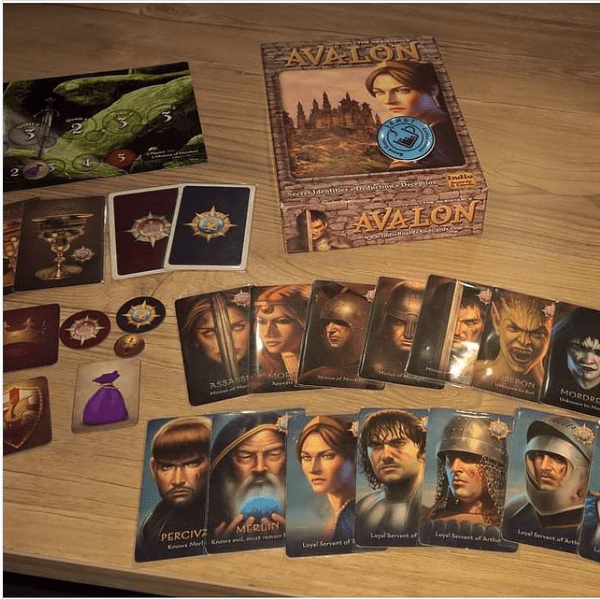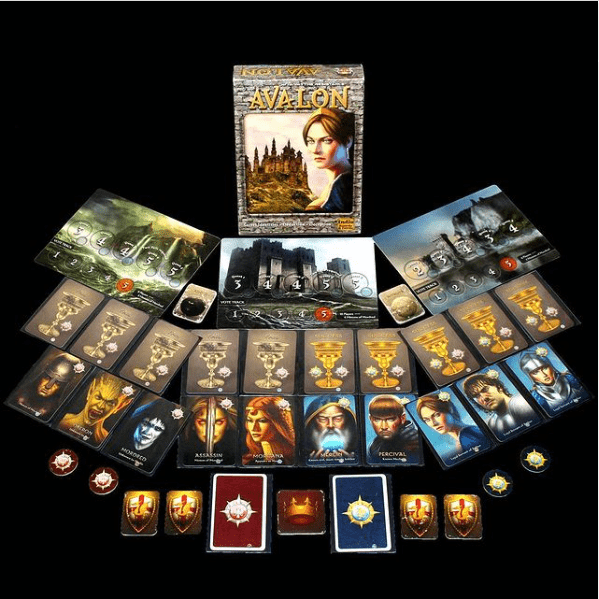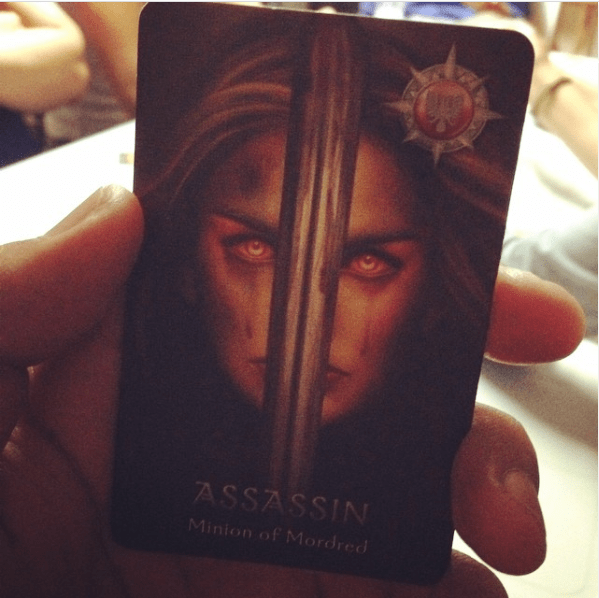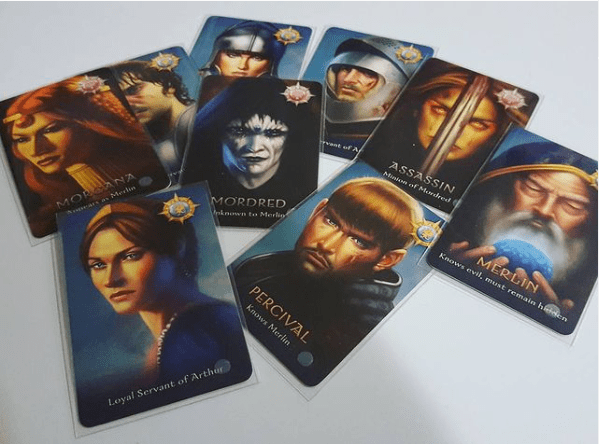Avalon, often known as “The Resistance: Avalon”, is a logical reasoning game based on the popular card game The Resistance. Starting with the most obvious comparison, the original game and its derivative, Avalon, are about a conflict between the government and the resistance. Let’s get to know The Resistance: Avalon edition’s rules and characters now so you can have the best gaming experience possible.
Avalon: Overview
Don Eskridge’s Avalon was first published in 2012, and he also served as the game’s designer. The ideal number of players is between five and ten, and a game typically lasts for about 30 minutes.
The original game took place in modern times, but Avalon transports players back to the Medieval Era, where they may enjoy the company of knights and sorcerers. You’ll have to learn more about magic, and you’ll either fight with Arthur and his knights against Mordred’s army or become Mordred’s servant and help him take over Camelot.
But this version adds things—like Merlin—that wasn’t in the classic version. Merlin is Arthur’s new friend and ally. Due to this newly created role, the forces of evil now have a fighting chance to turn the tide and gain victory. All in all, it’s a fantastic game that tests your reasoning, strategy, teamwork, social skills, and ability to assume the personae of others.
Gameplay of Avalon
Each player begins the game with a single character card, which will be dished out at random. Once the players know their roles, one of them will read a script revealing their allies and giving them a heads up on who they may discreetly cooperate with.
But how would the bad guys know each other and how would Merlin know who the bad guys are?
- Everyone extends their right arm into the circle and closes their eyes.
- Minions of Mordred (evil players) open their eyes so they may know each other.
- Minions of Mordred close their eyes.
- Merlin opens their eyes.
- Minions of Mordred extend their right thumb into the air so that Merlin will know them.
- Minions of Mordred lower their thumbs, and Merlin closes their eyes.
- Everyone opens their eyes and starts the game.
By following these instructions, the bad guys can identify one another without tipping off the good guys. Furthermore, Merlin is aware of the villains’ identities, but they are unaware of their existence. Unique to Merlin is his capacity to recognize those who are working in secret for Mordred quickly. But Merlin must be cautious with this information, as the bad guys could steal the game if they can figure out which player is Merlin at the conclusion.
First Phase: Team-building
Each round would consist of two parts: the team-building and the mission phases. At the beginning of each round, the participants engage in a team-building activity. One participant will be chosen as the team leader at this stage. In their position as leaders, they would be expected to offer suggestions that reflect their expertise and experience. Here, the leader proposes a group of people embark on a mission, which requires a specific number of people to complete. After hearing the leader’s suggestion, the other players can vote to accept or reject it. If all participants accept the suggestion, they will go on to the mission stage. When a proposal is rejected, the leader role is passed on to the next player, and so on.
Second phase: Mission
The chosen participants will enter the mission phase when a proposal has been accepted. At this point, the mission participants will select a mission card from the leader’s hand. A card is picked out and turned over to the player. If every single card turned up was a success, the mission would be completed. However, the quest would be considered unsuccessful if even a single failed card appeared.
After the Mission Phase
After the conclusion of the mission phase, the game’s progress can be recorded in a new tableau. Players should use a blue score marker using Arthur’s sigil to indicate a successful mission and a red score marker featuring Mordred’s sigil to mark a failed mission.
After each successful round, the round marker should be moved to the next mission slot on the tableau. The leader role will be handed clockwise to the next player, who will initiate the Team Building phase to kick off the next game.
This will continue until one side has finished three tasks successfully or failed. A victory for Arthur’s side is guaranteed after three tasks. With the failure of any of the three tasks, Mordred’s side will win.
How Minions of Mordred Can Steal the Win
There’s a new playable character named Merlin in this round of the Resistance game, as noted above. Here’s the twist: even if Arthur’s side wins (by completing all three objectives), the bad guys may still turn the tide of battle by correctly identifying who on Arthur’s squad is Merlin. The one who plays the Assassin card gets to reveal who Merlin is. If the prediction were correct, the bad guys would win, but if not, Arthur’s side would.
Other Characters with Optional Abilities
Other characters usually do not have unique roles than Merlin and the Assassin. But if the players want to spice things up in the game, here are the characters with optional abilities that may be applied.
- Percival (Good): At the start of the game, Percival, a devoted servant of Arthur’s, learns Merlin’s true identity by having them stick their thumb in the air. Everyone, including Merlin, remains unaware of Percival’s true identity. This player will even be the playing field in favor of the good guys and assist cover for Merlin.
- Morgana (Evil): The fake Merlin. Mordred’s servant Morgana tricks Percival. Morgana lifts their thumb during the opening round when Merlin puts theirs up to expose themselves to Percival, leaving Percival confused as to which “Merlin” to believe. Morgana tips the scales in favor of evil, albeit their impact requires applying Percival’s ability to take effect.
Oberon (Evil): Oberon is Mordred’s servant, although he causes trouble for Mordred’s team. Oberon doesn’t know which players are on the evil side. The evil side also does not know who Oberon is. But Merlin knows who Oberon is. This results in both Oberon and the other bad players forcing each other to guess who they are. The role of Oberon creates a level playing field for the good side.
Social deduction lies at the heart of The Resistance: Avalon. This game has secret roles assigned so that others won’t know who is who until the end. Because this is a social deduction game, the good side has no idea who else is on their side. At the outset of the game, all of the bad guys know who each other is playing as. Only Merlin is an exception in this regard. You need to outplay, outsmart, and bluff the other players to win.





